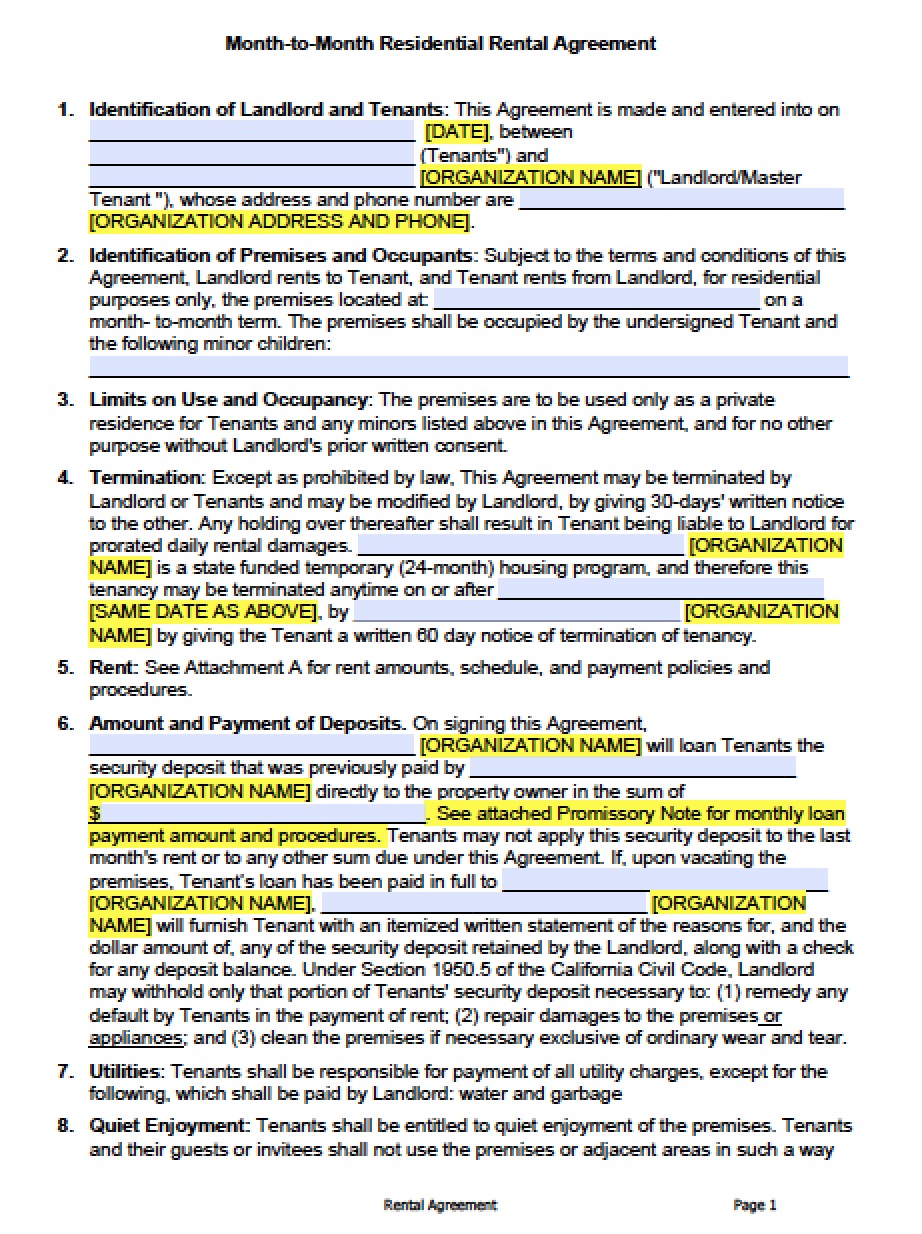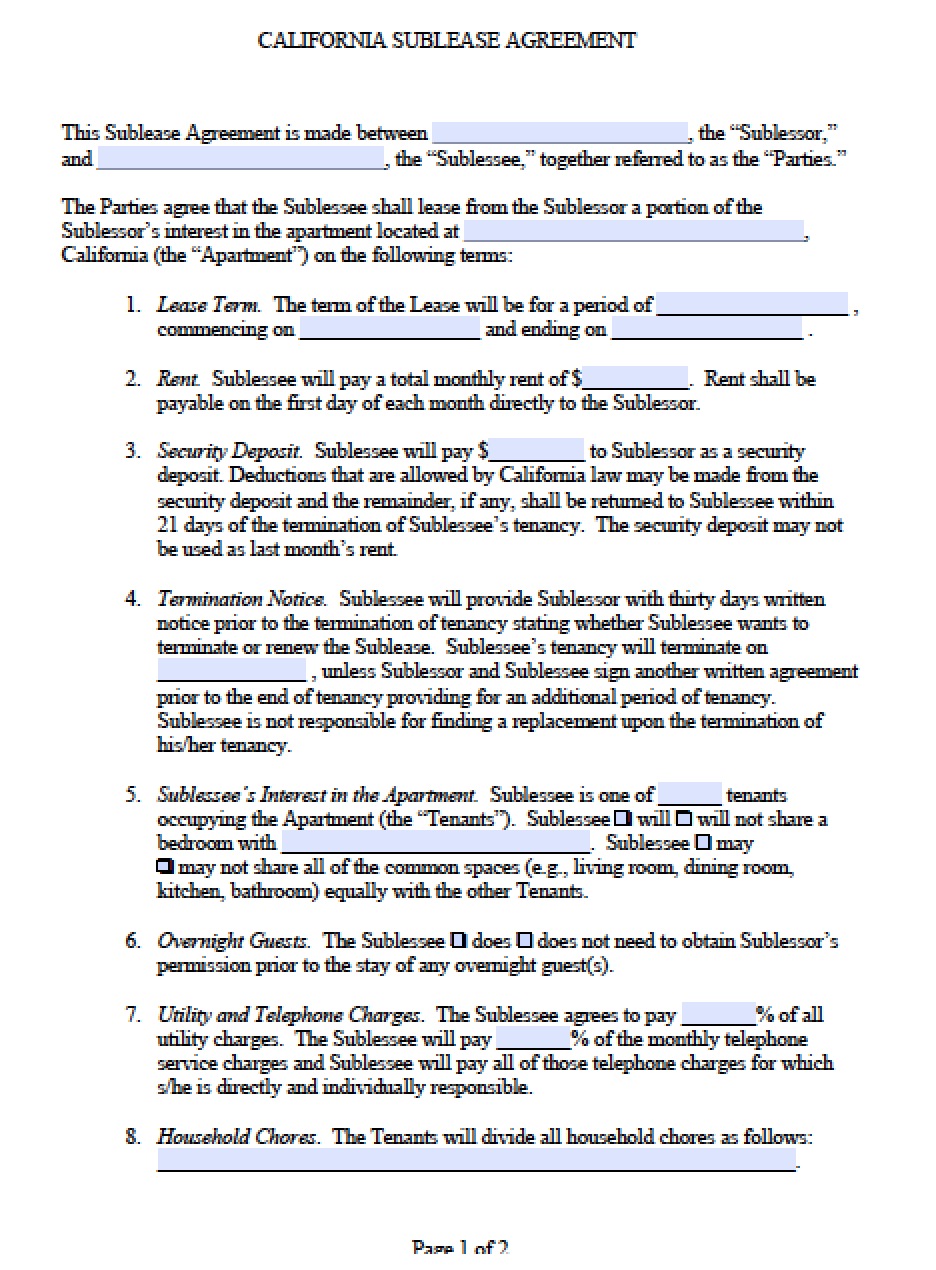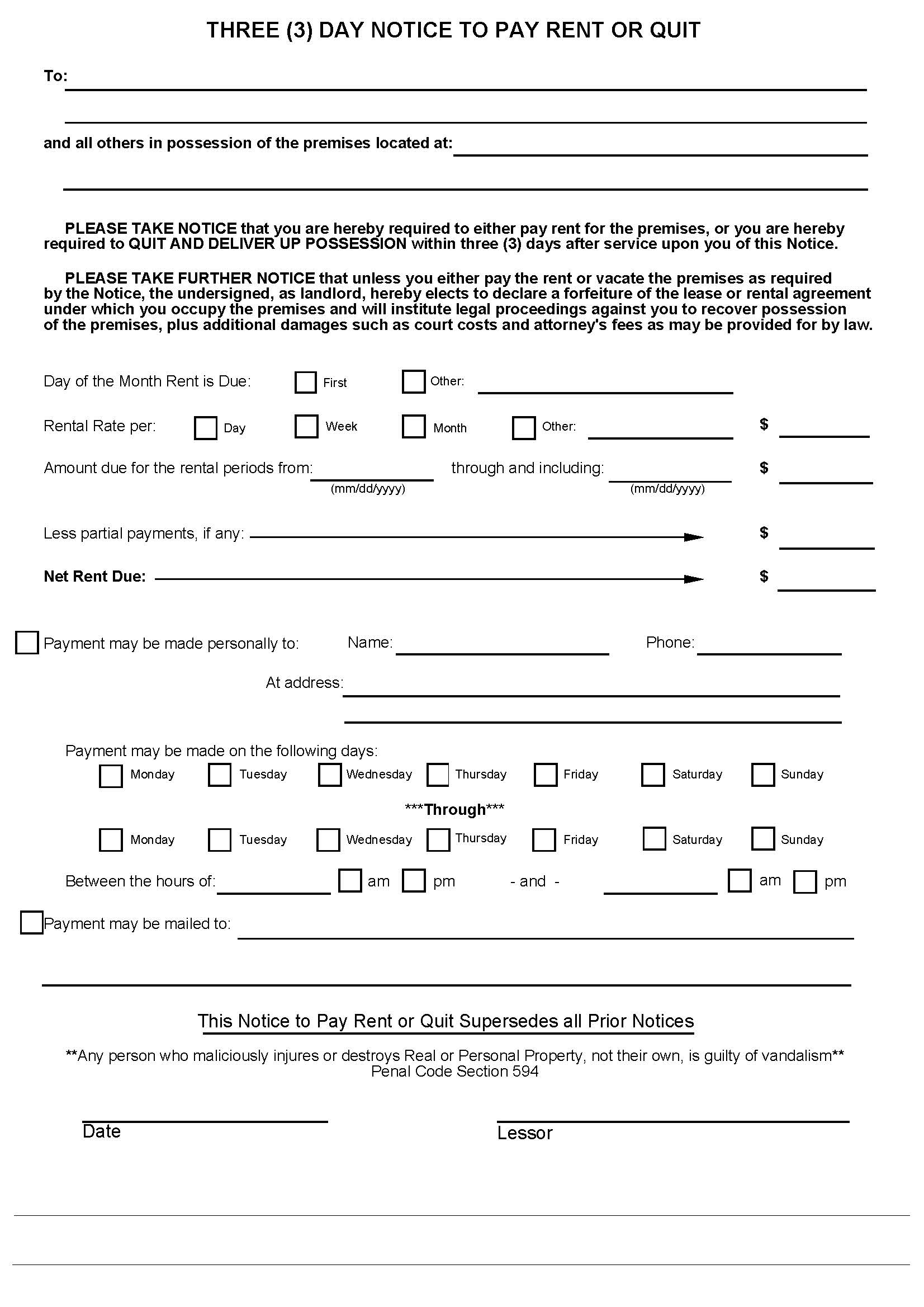
California rental agreements are written between a landlord and tenant seeking to lease residential or commercial property. The agreement is commonly signed after the landlord conducts a background check and verifies the tenant’s income (using a rental application). Once the tenant screening is complete, the landlord will negotiate any last remaining items and enter into the agreement for signature.
The California standard residential lease agreement is structured around a one (1) year term, in which the tenant is legally bound to pay a monthly rent to maintain residency. It is highly recommended that the landlord conduct a background check on any applicant (See the Rental Application), due to information that can be uncovered that could sway the landlord’s decision on accepting the new tenant. If the landlord accepts, they may charge the new tenant with a security deposit usually…
272,478 DownloadsThis California rental application is useful for landlords to help them screen any new applicants before allowing them to rent their property. In this application, the possible tenant will be directed to fill in their Name, Birthday, Social Security Number, Drivers License Number, Rental History, Employment History, Credit History, Vehicles currently owned, and any other personal information. The landlord can discover, through this screening process, that the tenant frequently skips payments, has poor reviews from previous landlords, and/or has a…
119,432 DownloadsThe California commercial lease agreement is a document used to lease a property to a tenant requiring retail, office, or industrial space. Often a landlord will not see rent payments until the business in question has begun generating sufficient income. For this reason, it is wise of the landlord to research the business prior to drafting a lease agreement. In general, there are three types of commercial lease agreements used when entering into a landlord-tenant relationship; each has been described below. 3…
114,674 Downloads
The California month-to-month lease agreement is popular with individuals that do not plan on residing on property for a predetermined amount of time. With a month-to-month tenancy or tenancy at will, the contract ends and begins every thirty (30) days. While this type of lease agreement is less constricting than the average, it is still recommended that the landlord perform a background check on the new tenant with a rental application, as crucial information can be uncovered through this process. Along…
111,705 Downloads
The California sublease agreement will allow a tenant (sublessor) of a property to introduce a subtenant, called a “sublessee.” This type of agreement splits up the rent between the sublessee and the sublessor(s) to provide the latter party with financial relief. This document is strictly between the abovementioned parties and does not involve the landlord directly (although the landlord should be notified of the sublessee prior to the signing of the sublease). It should be stated that the master lease…
87,265 Downloads
The California three-day notice to quit form is designated for a tenant late on their rent to decide whether to pay all that is owed to the landlord within the provided timeframe or move out. The form is to be filled in by the landlord and is to be properly served upon the tenant (See flow chart). Often a landlord, if they have a longstanding relationship with the tenant, will provide a verbal warning to show good faith. When is…
33,017 DownloadsAsbestos Addendum – An addendum must be added if the property being rented contains or may contain asbestos.
Bedbug Addendum (§ 1954.603) – Landlord, after inspection, must attach addendum regarding the possibility of a bedbug infestation.
CC&R’s Addendum – Signature of this document acknowledges that the tenant received a copy of the lease or rental agreement.
Crime/Drug Free Addendum – Landlord and tenant must sign addendum regarding illegal activity on the premises.
Flooding Disclosure (§ 8589.45) – Landlord must disclose if the property is within flooding zone.
Grilling Addendum – An addendum regarding the tenant’s ability to grill on the premises.
Lead Based Paint Disclosure – If the property was built prior to 1978, a landlord must disclose the possibility of lead-based paint having been used on the property.
Megan’s Law (§ 2079.10a) – Landlord and tenant must sign expressing acknowledgment of Megan’s law regarding sex offenders.
Mold Notification Addendum (§ 26147)- An required addendum regarding the existence of mold on the property.
Move-in Checklist – Checklist that lists the damage to the property prior to the tenants move-in date to be referenced at the end of the term to determine the validity of security deposit claims.
Ordnance Locations (§ 1940.7) – Landlord must disclose knowledge of the existence of any federal or state ordnance locations in the neighborhood that exist or have existed.
Pet Addendum – An addition to the lease agreement if the tenant would like to bring a pet on to the premises.
Renter’s Insurance Addendum – This form should be included if the landlord demands that the tenant acquire renter’s insurance.
Satellite Dish and Antenna Addendum – Californian tenants have the right to a satellite dish or antenna; however, this addendum must be completed should that be the case.
Smoke Detector/Carbon Monoxide Addendum (§ 17926) – To be completed to ensure tenant is aware of smoke and carbon monoxide detectors on-premises.
Smoking Policy Addendum (§ 1947.5) – Landlord must disclose if smoking is allowed on-premises.
Maximum (1950.5) – If the property is unfurnished, the landlord can demand two (2) months’ rent. If the property is furnished, the landlord can demand three (3) months’ rent. If the tenant elects to use a waterbed, the landlord may charge an additional half month’s rent.
Returning (1950.5)- As long as the tenant returns the keys and vacates the property as stated in the rental contract, the landlord must give back the deposit within twenty-one (21) days.
The landlord has the right to access the rental unit with at least twenty-four (24) hours’ notice to the tenant (Code 1954). For the last inspection upon move-out, the landlord has to give forty-eight (48) hours notice. It is recommended that the landlord use a Written Notice.